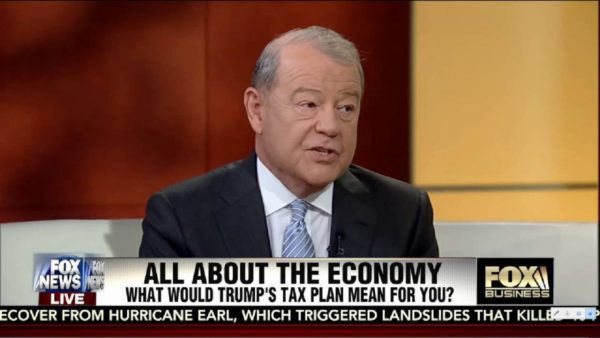

Federal workers are much better off than private-sector workers in all the major markers of job satisfaction – salary, job security, benefits and job desirability.
We recently reported that it is costing the taxpayers a bundle.
Start with the money. The average federal employee earns an annual salary almost 60% higher than the average private-sector employee — $79,000 vs. $50,000.

Federal employees do have more education (on average) than private-sector workers. Their unions argue that this justifies their higher pay. But it doesn’t. Even after controlling for education and experience, federal employees get paid significantly better — 22% more per hour, on average — than private-sector workers.
According to the Bureau of Labor Statistics, there are about 2.2 million civilian jobs in the federal government, excluding the mailing agency, making up about 1.5% of all jobs in the United States.
“Granted, many of these highly-paid government workers have professional qualifications. Got it. And they work in very stressful situations. Got that too. But it grates, doesn’t it?” Varney said on Fox Business Network on Wednesday.
The FOX News Insider reports:
‘Essentially Un-American’: Varney Calls Out Bloated Salaries of Federal Gov’t Employees
Stuart Varney said a new report about federal employee pay is a sign that government bureaucracy is out of control.
According to the report, titled “Mapping the Swamp” and released by government watchdog group OpenTheBooks, 400,000 federal employees make more than $100,000 a year, 30,000 make more than $190,000 and 78 departments and agencies have an average employee salary of $100,000 or more.
It also revealed that the average federal employee is given considerable paid time-off, including 10 federal holidays, 13 sick days and 20 vacation days per year.
“Granted, many of these highly-paid government workers have professional qualifications. Got it. And they work in very stressful situations. Got that too. But it grates, doesn’t it?” Varney said on Fox Business Network on Wednesday.
He said it’s annoying that a small business owner who wants to expand might have to ask for permission from a federal employee who makes more than they do – and who doesn’t like business in the first place.
Federal civil servants enjoy another perk: near-absolute job security. Private businesses cut hiring and increase layoffs when sales drops. From 2007 through 2009, the adult unemployment rate in the private sector more than doubled, from 4.2% to 9.4%. Not in government. The percentage of federal employees who lost jobs barely budged, going from 2.0% to 2.9%.
This is largely because of civil service rules. It’s virtually impossible to fire federal employees for bad performance once they’ve passed a one-year probationary period.
Not surprisingly, federal employees rarely quit. In good economic times, they voluntarily leave at roughly a third the private-sector rate. And that disparity has only grown since the recession began.
The Trump administration eliminated nearly 11,000 federal employees during its first six months.
He reversed a two year trend of gains throughout the executive branch.
A July jobs report released by the Bureau of Labor Statistics Friday showed non-postal federal agencies employed 2,188,900 workers at the end of the month, down 2,200 from June and 10,700 from January, when Trump took office.
It could lead to between 100,000 and 200,000 cuts to federal civilian jobs.
Given the high concentration of federal jobs surrounding the capitol, it is estimated employment in Washington D.C. area could fall by 1.8%, personal income by 3.5%, and lower home prices by 1.9%.
In contrast, areas of the country that could benefit are places with a high concentration of military jobs and veterans, like Virginia, Southern California, parts of Florida, and Texas.
President Trump has prioritized shrinking the civilian workforce, issuing an executive order — and follow up guidance through the Office of Management and Budget — calling on agencies to develop short and long-term strategies to cut employees. Agencies turned in preliminary drafts for those plans on June 30, which also required leaders to spell out what steps they have already taken to trim their rolls.
Not since 2013 have federal agencies slashed jobs on such a large scale. That was when sequestration, triggered by the 2011 Budget Control Act, forced agencies to take drastic measures to cut costs. Agencies shed nearly 57,000 jobs that year, the largest drop off in any single year since 1997. The federal government began making net hiring gains again in mid 2014, and added nearly 50,000 employees in 2015 and 2016 combined.
Do you agree with Stuart Varney that government bureaucracy is out of control?
more recommended stories
 Fentanyl Seizures at Border Continue to Spike, Making San Diego a National Epicenter for Fentanyl Trafficking
Fentanyl Seizures at Border Continue to Spike, Making San Diego a National Epicenter for Fentanyl TraffickingFentanyl Seizures at Border Continue to.
 Utah Man Sentenced for Hate Crime Attack of Three Men
Utah Man Sentenced for Hate Crime Attack of Three MenTuesday, August 8, 2023 A.
 Green Energy Company Biden Hosted At White House Files For Bankruptcy
Green Energy Company Biden Hosted At White House Files For BankruptcyAug 7 (Reuters) – Electric-vehicle parts.
 Former ABC News Reporter Who “Debunked” Pizzagate Pleads Guilty of Possessing Child pδrn
Former ABC News Reporter Who “Debunked” Pizzagate Pleads Guilty of Possessing Child pδrnFriday, July 21, 2023 A former.
 Six Harvard Medical School and an Arkansas mortuary Charged With Trafficking In Stolen Human Remains
Six Harvard Medical School and an Arkansas mortuary Charged With Trafficking In Stolen Human RemainsSCRANTON – The United States.
 Over 300 People Facing Federal Charges For Crimes Committed During Nationwide Demonstrations
Over 300 People Facing Federal Charges For Crimes Committed During Nationwide DemonstrationsThe Department of Justice announced that.
